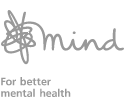Four ways social media platforms could stop the spread of hateful content in aftermath of terror attacks
Bertie Vidgen, University of Oxford
The deadly attack on two mosques in Christchurch, New Zealand, in which 50 people were killed and many others critically injured, was streamed live on Facebook by the man accused of carrying it out. It was then quickly shared across social media platforms.
Versions of the livestream attack video stayed online for a worrying amount of time. A report by the Guardian found that one video stayed on Facebook for six hours and another on YouTube for three. For many, the quick and seemingly unstoppable spread of this video typifies everything that is wrong with social media: toxic, hate-filled content which goes viral and is seen by millions.
But we should avoid scapegoating the big platforms. All of them (Twitter, Facebook, YouTube, Google, Snapchat) are signed up to the European Commission’s #NoPlace4Hate programme. They are committed to removing i...
Want to see the rest of this article?
Would you like to see the rest of this article and all the other benefits that Issues Online can provide with?
- Useful related articles
- Video and multimedia references
- Statistical information and reference material
- Glossary of terms
- Key Facts and figures
- Related assignments
- Resource material and websites

 Four ways social media platforms could stop the spread of hateful content ...
Four ways social media platforms could stop the spread of hateful content ...








